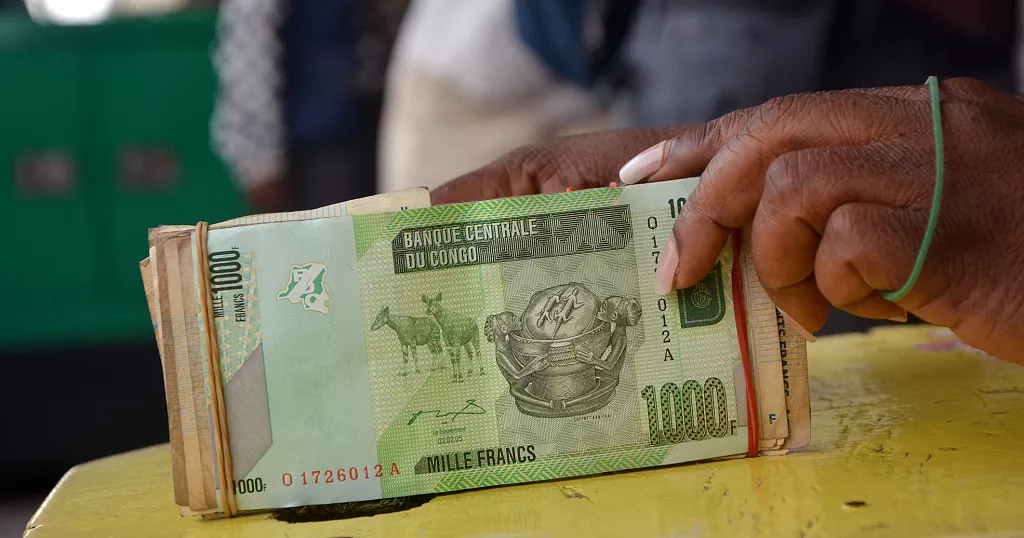DRC currency gains track mining inflows tightening
The Congolese franc appreciated 6.31% as authorities denied reserve intervention, crediting mining inflows, fiscal restraint, and tighter policy; sustained FX stability will hinge on HG=F and CL=F trends, reserve cover above three months, and inflation easing below 8% through 2026.

The Congolese franc’s 6.31% appreciation in October 2025 represents one of the sharpest monthly currency moves in Central Africa in recent years and a test of monetary credibility in a structurally dollar-dependent economy. Authorities insist the gain was not driven by foreign-exchange reserve intervention, instead crediting tighter monetary policy, fiscal restraint, and strong mining inflows. The move highlights how policy coordination and commodity dynamics can temporarily reinforce exchange-rate stability, though sustainability remains uncertain.
Macroeconomic conditions provide context for the rally. Real GDP growth in 2025 is estimated near 6%, supported by expanding copper and cobalt production, while the fiscal deficit has narrowed to about 2% of GDP from 2.9% in 2023. Public debt remains low at roughly 20% of GDP, largely concessional, minimizing rollover risk.
Inflation has slowed to around 9% year-on-year, down from double digits a year earlier, and the Central Bank of Congo (BCC) has maintained a policy rate above 14%, keeping real interest rates slightly positive. Reserves stand around USD 5.5 billion, equivalent to 2.5–3.0 months of imports, providing limited but sufficient liquidity for a floating regime. These metrics support the currency’s resilience but also expose it to commodity cycles and shallow FX market depth.
The mechanism behind the appreciation is multifaceted. Elevated copper (HG=F) prices near USD 9,400 per metric tonne and cobalt benchmarks in the low-USD 30,000s per tonne have improved hard-currency supply through export receipts and statutory repatriation requirements. The resulting inflows, combined with tighter liquidity management, have reduced dollar demand while lifting the nominal carry for franc-denominated assets.
Treasury yields have aligned closely with the policy rate in the low-to-mid teens, encouraging local investors to hold francs rather than convert to dollars. Meanwhile, import compression and delayed public investment execution have temporarily eased external payment pressures, amplifying upward momentum in a thin interbank market.
Market response has been cautiously optimistic. The currency gain narrowed sovereign risk premia on hard-currency proxies by roughly 30–40 basis points and stabilized local Treasury yields. Commercial banks improved liquidity ratios as corporate importers delayed FX purchases, but the concentration of flows in mining-export channels leaves the system vulnerable to reversal. With reserves below three months of import cover, the BCC’s room to intervene defensively is limited; any commodity price correction could quickly reintroduce depreciation pressure. The franc’s flexibility has, however, reduced the need for sterilized interventions that would otherwise drain reserves.
Regionally, the DRC’s performance diverges from the managed pegs of the CEMAC zone and the weaker currencies of peers such as Zambia and Ghana, which continue to face external refinancing and import-related dollar demand. The franc’s flexibility lowers balance-sheet risk for the central bank and aligns the DRC with global best practice for resource economies transitioning toward inflation-targeting frameworks. Yet the absence of deep interbank liquidity, FX derivatives, or a functioning forward market means that volatility is displaced to the spot rate, complicating hedging and price discovery.
Policy discipline will determine whether the appreciation consolidates or reverses. Maintaining real-positive rates as inflation trends toward 8% would support the currency’s nominal anchor. Strengthening the BCC’s liquidity management through predictable open-market operations, transparent FX auction calendars, and calibrated sterilization would enhance credibility. Fiscal pacing remains equally crucial: consistent royalty collection and staggered external payments reduce liquidity shocks that destabilize the exchange rate.
Forward indicators through mid-2026 will define success. Sustained reserves above three months of imports, inflation below 8%, and a stable interbank FX rate fluctuating within a +/- 2 to 3% band for consecutive quarters would confirm that the appreciation reflects improved fundamentals rather than a short-term liquidity distortion. Continued compression of sovereign spreads relative to frontier energy peers would reinforce that policy credibility, not reserves, is anchoring the DRC franc.





